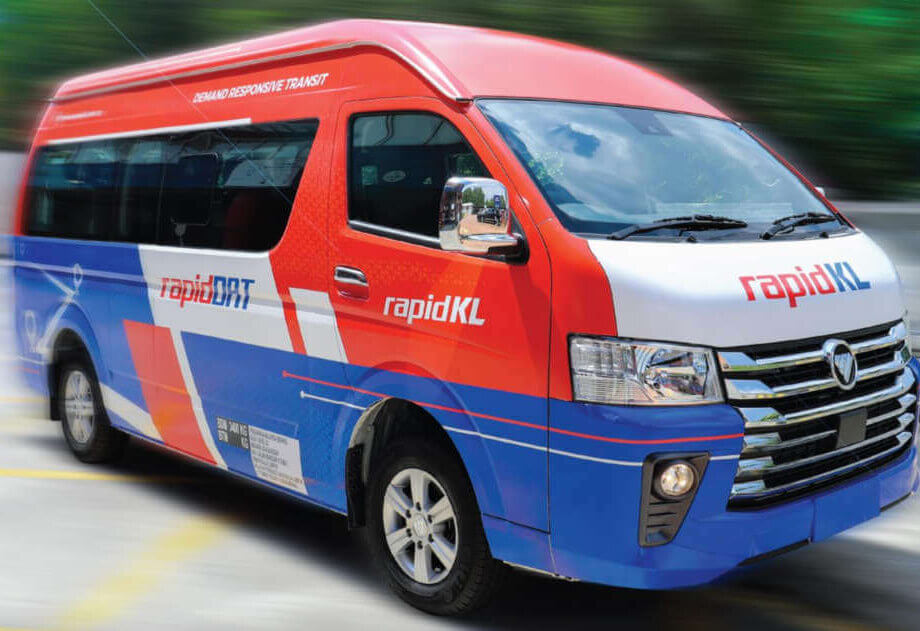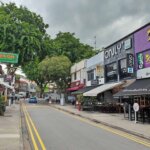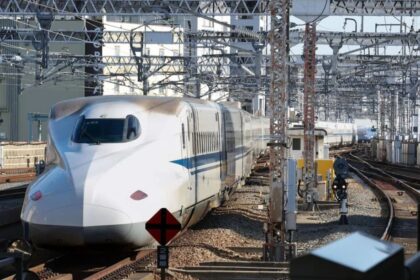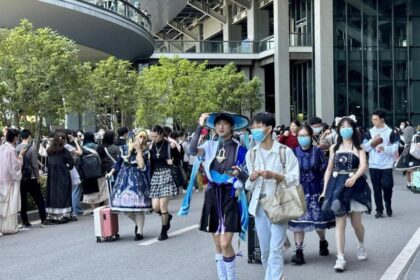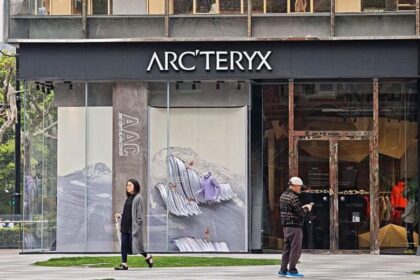Malaysia’s Urban Mobility Challenge: The First and Last Mile Problem
Malaysia’s major cities, especially in the Klang Valley and Penang, have long struggled with urban congestion and low public transport usage. Despite significant investments in Light Rail Transit (LRT), Mass Rapid Transit (MRT), and bus networks, only about 25% of Malaysians use public transport regularly, compared to 67% in neighboring Singapore. One of the main reasons is the persistent “first and last mile” problem: the difficulty of getting from home to a transit station, and from the station to the final destination. For many, these gaps make public transport inconvenient, pushing commuters toward private cars and worsening traffic jams.
- Malaysia’s Urban Mobility Challenge: The First and Last Mile Problem
- Rapid On-Demand Vans: A New Solution Emerges
- How the Service Works: Booking, Payment, and Coverage
- Real-World Impact: Commuter Stories and Cost Savings
- Service Expansion: Growing Fleet and New Zones
- User Experience: Praise, Challenges, and Calls for Improvement
- Broader Implications: Urban Planning, Sustainability, and the Future of Public Transport
- What’s Next: Integration, Expansion, and the Road Ahead
- In Summary
For example, a resident living just 2.5km from an LRT station might face a 30-minute walk due to poor pedestrian infrastructure, lack of shelter, or indirect routes. In sprawling urban areas like Kuala Lumpur, buses often get stuck in traffic, making short commutes unpredictable and time-consuming. This disconnect between transit hubs and residential or commercial areas has been a major barrier to increasing public transport adoption.
Rapid On-Demand Vans: A New Solution Emerges
To address these challenges, the Malaysian government and Prasarana Malaysia Berhad, the country’s main urban public transport operator, have launched the Rapid On-Demand (ROD) van service. This innovative approach, also known as Demand Responsive Transit (DRT), uses 12-seater passenger vans to provide flexible, app-based rides within a 5km radius of major rail stations. The service is designed to bridge the first and last mile, making it easier for commuters to access the broader public transport network.
Since its launch in May 2024, the ROD van service has seen explosive growth. Daily ridership soared from just 354 passengers to nearly 10,000 by June 2025, with projections aiming for 36,000 daily users as the fleet expands. The service now covers over 101 zones in the Klang Valley and Penang, with plans for further expansion as more vans are added to the fleet.
Commuters can book rides through four different mobile apps—Rapid On Demand, Kummute, Trek, and Mobi—with waiting times typically ranging from three to 20 minutes, depending on demand and van availability. Each trip is priced at a promotional RM1 (about US$0.21), or free for holders of the My50 monthly pass, which offers unlimited travel on Rapid KL services for RM50 per month.
How the Service Works: Booking, Payment, and Coverage
The ROD van service operates much like popular e-hailing platforms, but at a fraction of the cost. Passengers use a mobile app to book a seat, select their pick-up and drop-off points, and receive confirmation with a booking number. Before departure, drivers verify bookings to ensure passengers board the correct van. The vans are equipped with comfortable seating, air-conditioning, and designated spaces for persons with disabilities.
Payment options have been expanded for user convenience. In addition to the My50 pass and Touch ‘n Go cards, passengers can now pay using debit and credit cards, thanks to the introduction of open payment systems. This digital integration aims to make the service accessible to a wider range of users, including those who may not have traditional transit cards.
The service is particularly beneficial in high-density residential areas, such as apartments and flats, where traditional buses may struggle to navigate narrow roads. By operating within a 5km radius of LRT and MRT stations, the vans ensure that most passengers can reach a transit hub within 10 minutes, significantly reducing overall commute times.
Real-World Impact: Commuter Stories and Cost Savings
For many Malaysians, the ROD van service has been a game-changer. Ms Izzah, an engineer commuting from Putrajaya to Petaling Jaya, used to spend over two hours driving through notorious traffic jams. Since switching to public transport and the ROD van for her last-mile connection, her total journey time has dropped to under an hour. The cost savings are substantial: instead of spending over RM600 monthly on fuel, tolls, and parking, she now pays RM350 for a KLIA Express monthly pass and RM50 for the My50 pass, covering all her train, LRT, and van rides.
Other commuters echo similar sentiments. College student Syed Aidrus Syed Omar appreciates the punctuality and affordability, noting that he now waits less than 10 minutes for a van and saves both time and money compared to traditional buses or e-hailing. Front office executive Kenneth Raj describes the service as “the best mashup of the affordability of public transport but with the convenience and speed of e-hailing.”
For business owners and students, the ROD van has made daily commutes faster and less stressful. Mirttika M. Velanthren, a university student, highlights how the My50 pass allows her to travel for free on the van service, making it easier to attend classes and socialize with friends.
Service Expansion: Growing Fleet and New Zones
Driven by strong demand, the ROD van fleet has rapidly expanded. In June 2025, an additional 320 vans were added at a cost of RM55 million, bringing the total fleet to over 600 vehicles. The number of service zones has grown from 37 to 101 nationwide, with new routes regularly introduced to meet rising passenger demand. Recent expansions have targeted high-density and underserved areas, including new zones in Ampang, Putrajaya, Cyberjaya, and several MRT-linked neighborhoods.
Each operational zone typically features multiple vans and up to 20 stops, ensuring comprehensive coverage. The service operates from 6am to 11:30pm, accommodating both early-morning commuters and late-night travelers. The government has also set aside RM1.9 billion for the purchase of additional diesel and electric buses through 2028, further strengthening the public transport network.
To improve accessibility, the vans are equipped with features for persons with disabilities, and payment systems have been upgraded to accept a variety of cards and passes. The integration of the service with major rail lines and bus lanes has made it easier for commuters to plan seamless journeys across different modes of transport.
User Experience: Praise, Challenges, and Calls for Improvement
While the ROD van service has received widespread praise for its convenience, affordability, and speed, not all users have had smooth experiences. Some, like Ms Gan Hui Fang, initially struggled with the booking apps, finding the interfaces confusing and the process of selecting pick-up points unclear. Others have reported long waiting times during peak hours, or difficulty boarding vans without prior bookings.
Transport experts and user advocates have highlighted the need for a more user-friendly, unified booking platform. Currently, the existence of multiple apps—each serving different zones—can be confusing, especially for senior citizens or those less comfortable with digital technology. Suggestions include introducing a single, simplified app, call-in booking systems, or staffed kiosks at major transit points to assist users.
Rosli Azad Khan, a transport consultant, emphasizes the importance of digital literacy and accessible design:
“A booking app should have a simplified interface, with larger buttons for easy navigation. Senior citizens could be helped to learn the system through digital literacy sessions or in partnership with community centres.”
Wan Agyl Wan Hassan, CEO of MY Mobility Vision, adds:
“Consolidating all the different apps into a single, user-friendly platform would go a long way in making the service more inclusive and not just the digitally connected.”
Other concerns include the need for better routing algorithms to minimize wait times and ensure vans are dispatched to areas with the highest demand, especially during off-peak hours. Some users have also noted that the heavy van doors can be difficult for elderly passengers to operate, suggesting further improvements in vehicle design.
Broader Implications: Urban Planning, Sustainability, and the Future of Public Transport
The success of the ROD van service has important implications for Malaysia’s urban mobility strategy. By making public transport more accessible and convenient, the service has the potential to reduce reliance on private cars, ease traffic congestion, and lower carbon emissions. Experts note that the flexibility of on-demand vans can attract new users who might otherwise avoid public transport due to the inconvenience of the first and last mile.
However, urban planners caution that on-demand vans are not a panacea. While they complement existing bus and rail networks, they should not replace investments in robust, fixed-route bus systems, pedestrian infrastructure, and integrated urban planning. As Muhammad Zulkarnain Hamzah of Transit Malaysia explains, the root of the first and last mile problem lies in car-centric urban design and inadequate walkability. Long-term solutions require better urban planning, more walkable neighborhoods, and a regional transport authority to coordinate efforts across agencies.
Assoc Prof Dr Law Teik Hua of Universiti Putra Malaysia’s Road Safety Research Centre highlights the safety benefits:
“DRT vans are operated by trained drivers who adhere to higher safety standards while essentially removing the complexities and distractions of personal driving, reducing the potential for distraction-related accidents.”
Yet, as Malaysian Road and Transportation Safety Association president Nik Mohd Salim Nik Mohd Salleh points out, the service alone cannot solve urban congestion:
“Any new future DRT routes must be based on proper surveys of population density and commuter travel frequency from highly trafficked areas using personal vehicles. We should also seriously consider the ease of access to public transport as a part of any future urban planning projects, rather than turning to reactive measures like DRT.”
There is also a sustainability angle. While the vans are more fuel-efficient than large buses, they are still motor vehicles contributing to traffic and emissions. The government’s plan to introduce more electric buses and integrate the ROD van service with broader transit networks is a step toward greener, more sustainable urban mobility.
What’s Next: Integration, Expansion, and the Road Ahead
Looking forward, Prasarana plans to launch an integrated app by the second quarter of 2026, streamlining the booking process and reducing confusion caused by multiple platforms. Existing technology service providers will continue to offer ROD services on the unified platform, ensuring competition and innovation.
The government is also investing in further fleet expansion, with plans to add more vans and buses, including electric vehicles, to serve a growing number of zones. The focus will remain on improving first and last mile connectivity, especially in high-density and underserved areas.
For commuters like Ms Izzah and thousands of others, the ROD van service represents a significant improvement in daily life—offering a cheaper, faster, and more reliable alternative to driving. As Malaysia continues to urbanize, the lessons learned from the ROD van experiment will shape the future of public transport policy, urban planning, and sustainable mobility.
In Summary
- Malaysia’s Rapid On-Demand van service addresses the critical first and last mile problem in urban public transport, making it easier for commuters to access LRT and MRT stations.
- The service has seen rapid growth, expanding to over 101 zones with a fleet of more than 600 vans, and daily ridership approaching 10,000 as of June 2025.
- Commuters benefit from affordable fares (RM1 per trip), flexible booking via multiple apps, and improved connectivity in high-density and underserved areas.
- User feedback highlights both the strengths (convenience, cost savings, speed) and challenges (app usability, wait times, accessibility for seniors) of the service.
- Experts emphasize the need for integrated digital platforms, better urban planning, and continued investment in sustainable transport solutions.
- The ROD van service is a promising step toward reducing car dependency, easing congestion, and promoting public transport, but must be complemented by broader urban mobility reforms.


